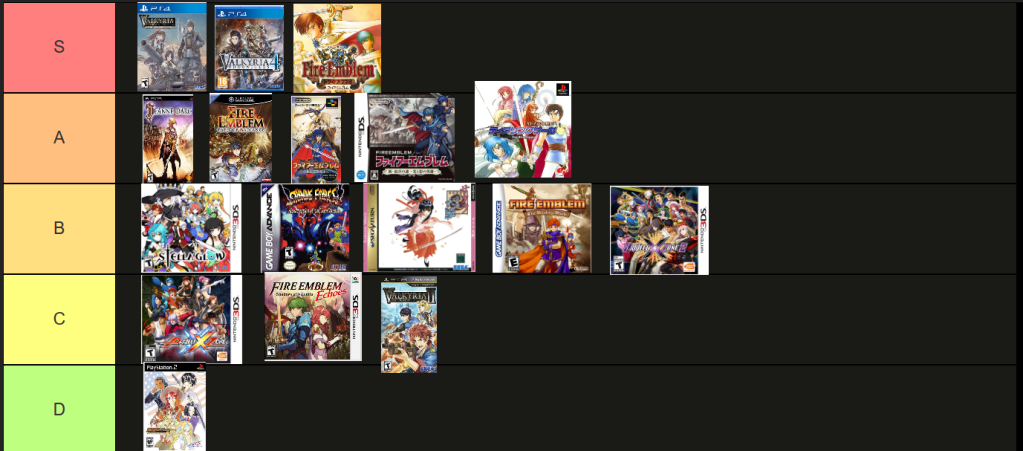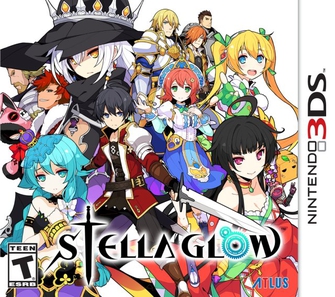Platform: Nintendo 3DS
Developer: Imagepooch
Publisher: Sega / Atlus
Year: 2015
Objectively, the 3DS is one of the best portable systems to play JRPGs, but it’s our duty as gamers to find them and play them. While some entries are obvious recommendations (meaning first parties), there were a lot of niche but interesting JRPGS as well. Stella Glow clearly belongs to the latter category, a production developed by Imagepooch and published/distributed by Sega/Atlus.
The fact it was eclipsed by a lot of games, underrated by the industry and the players as well, punished by some media and forgotten thanks to no sequels, ports or remasters are all causes for this game’s low popularity. However, and fortunately, we’ll see this has nothing to do with its actual quality.
Let’s begin discussing the concept and setting.
The story starts telling a tale from the distant past. There was once a god who was worshiped by all humans. Soon, they founded and developed a kingdom, the Kingdom of Regnant. However, after time passed, their faith in god also decreased. This led to god’s wrath, who sent an army of angels to kill humans. Fortunately, humanity was rescued by a hero named Elcrest.
It’s been a millenia since these events happened, and the kingdom now enjoys a relative peace. Elcrest’s tale is famous around the world and they consider him as a hero.
Our journey begins in the small Mithra village, when a common hunter named Alto goes to the forest to do his job. He has been living in the village for some years along with his sister (Lissete) and adoptive mom (Rosa), but he can’t remember anything from his past. The next day, he listens to some singing from the same forest, but he knows that only witches can sing, so he goes to investigate what’s happening..
I’ll stop right here with the prologue to avoid any possible spoilers, but I think this is sufficient to learn that the game’s setting is traditional fantasy, and its inspirations are very clear. In my opinion, it takes a lot of stuff from the Ar Tonelico saga, it is heavily influenced by concepts like Song Magic or the ability to travel to a singer’s heart (very similar to the Cosmosphere from that series). In fact, the big quest from this story is to retrieve a specific song to save the world.
However, combat-wise this is a completely different approach. All battles are grid based and tactical (instead of Ar Tonelico’s turn based system), following and inheriting a lot of gameplay aspects from both Final Fantasy Tactics and Fire Emblem games. Turn order is defined by speed, maps have altitude, an SP bar exists and the direction of attacks matter, just like FFT. It also has a magical square that works like a rock-paper-scissors or weapon triangle (Fire Emblem). Boosting bonds between characters by talking to them to improve their combat value, the existence of side-objectives per map, combat animations per encounter are mechanics likely derived from FE too.
This game has no classes or jobs like the other entries mentioned, but the objective, use and nature of each unit is very clear from the start. This means we get a big team with attackers, defenders, healers, debuffers, distant attackers, etc. And of course, this leads to variety and strategic flexibility.
Level design gives me mixed reactions, because some areas are very fun to play and bring unique aspects that match the current situation. I like maps with altitude, some hazards and tiles with benefits.
However, some maps are like plain boring polygonal areas, uninspired works that are rather lame and tedious. And yet, this is far from being my biggest complaint about the game. I mean, seriously, the big flaws for me are the lack of challenge, and the copy-pasted ideas from Ar Tonelico, FFT and FE. I’ll elaborate more.
No challenge means 95% of the game is a breeze, and the remaining 5% is because the last levels are actually big deal. No higher modes exist, so this is the difficulty and can’t be increased.
And when I mentioned the lack of originality, it’s because I don’t find a lot of unique mechanics, a lot of them are good ideas that were already proved to work good on a SRPG. And of course, the Spirit World didn’t exist on either FE or FFT, but it existed on Ar Tonelico as a Cosmosphere that it’s almost the same concept and feature.
But, even if the game lacks challenge and originality, it still brings a great ride. Battles are very fun most of the times and we need to learn and master all mechanics and possibilities to create our best strategies. The story is good even if it has some common RPG tropes and it’s heavily inspired in Ar Tonelico. Most of the characters are likable and they get their own screen time thanks to the Free time > Barracks feature.
Music is always an asset on this game, no matter if we listen to some epic, folky tunes or we enjoy the girl’s songs, all of them are enjoyable sounds to listen to. And they all match the situation depicted too.
Character art also gets my total praise, I like them all and some combat animations are actually better than what I’ve seen in some 3DS Fire Emblem.
Conclussion
I tried to balance the good VS bad stuff here, and this time the flaws don’t weigh too heavy to damage the overall product. It gets a solid 8.0 for me and I recommend it for all SRPG lovers and Ar Tonelico fans as well.

